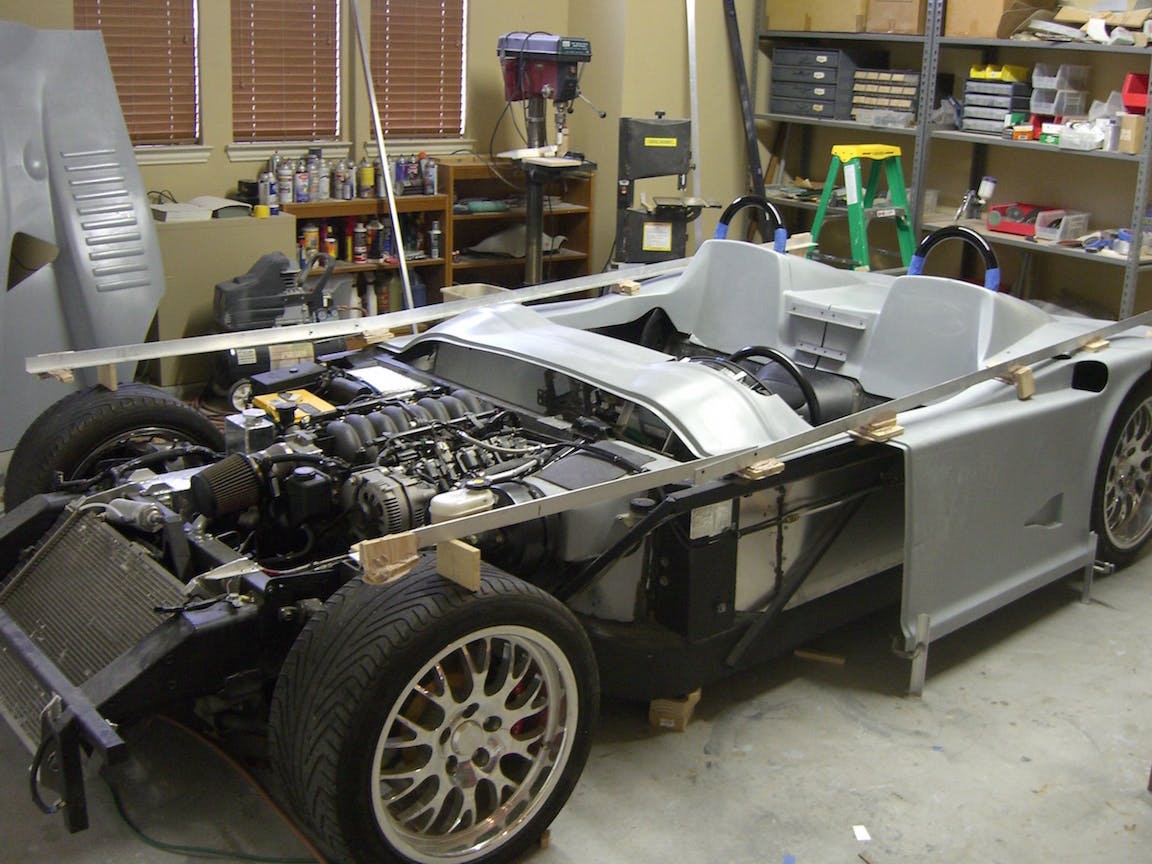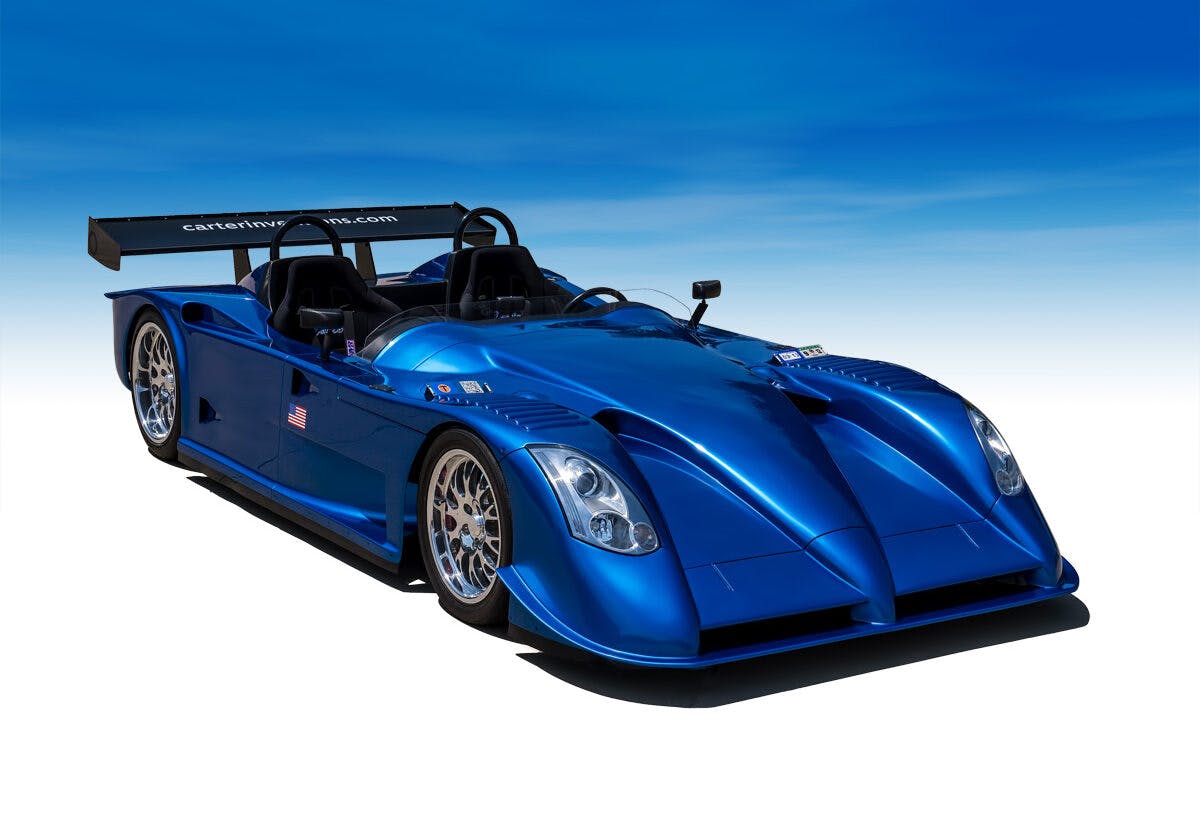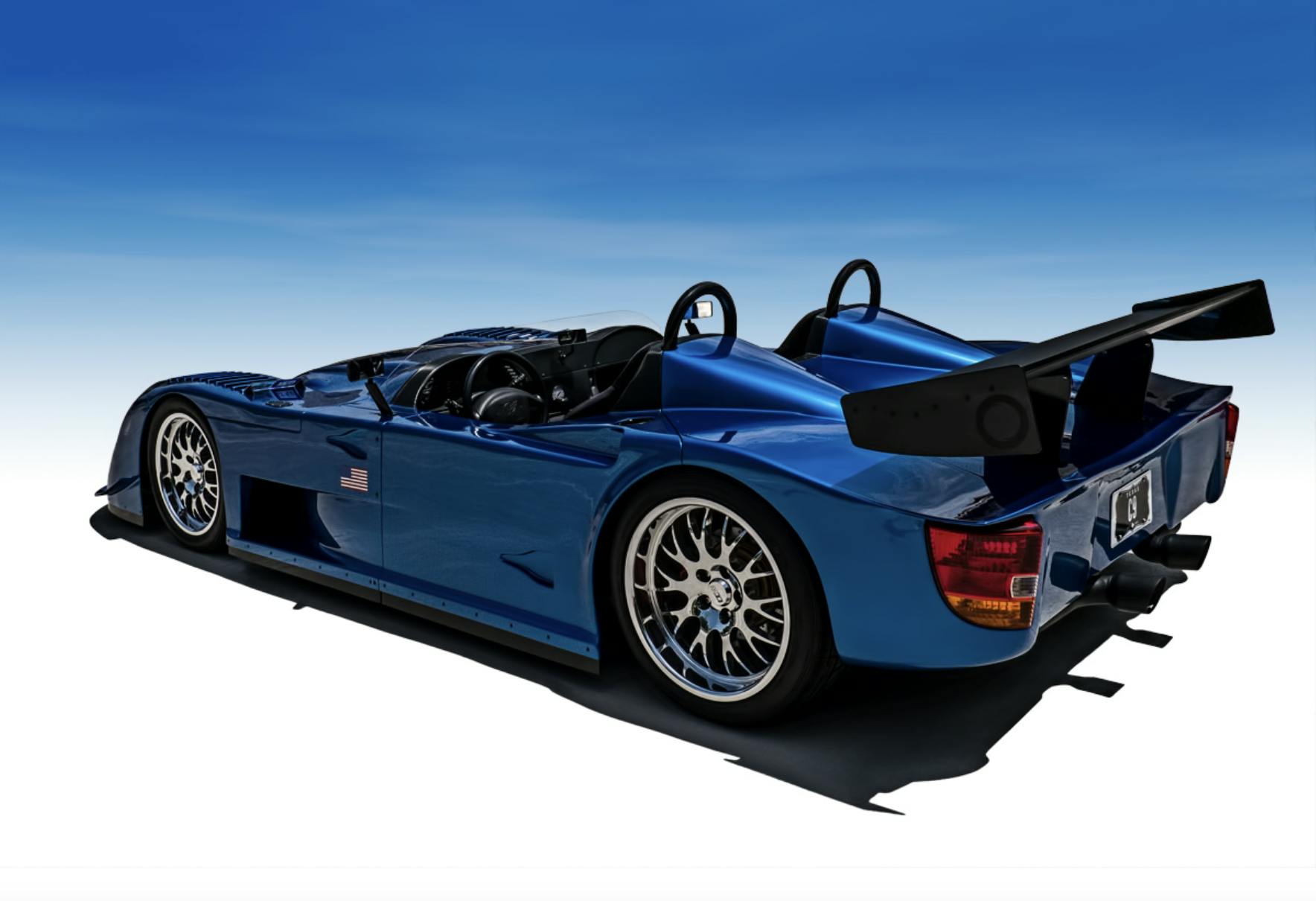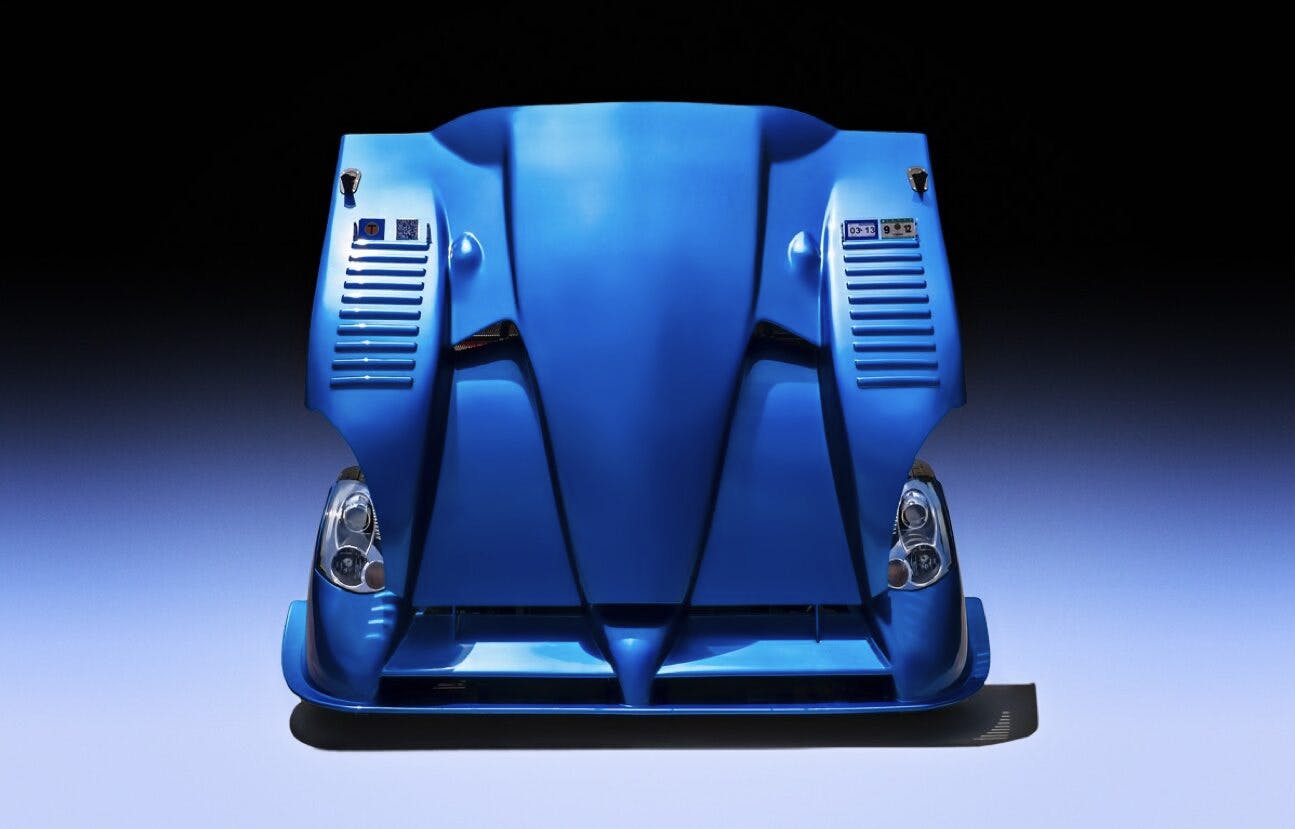Homegrown: Carter Prototype, the first Le Mans endurance racer qualified for Texas road use
Welcome to Homegrown—a limited series about homebuilt cars and the ingenuity of their visionary creators. Know a car and builder that might fit the bill? Send us an email to tips@hagerty.com with the subject line HOMEGROWN. Read about more Homegrown creations here. —Ed.
George A. Carter III, 78, a Hagerty member residing in Athens, Texas, has enjoyed a fruitful life constructing his playthings from scratch. This started at age 11 with a hydroplane he built from Popular Mechanics plans. Carter obtained his first car at age 14, then won a Fisher Body Craftsman’s Guild award in high school.
This Homegrown genius has four significant inventions to this credit: the first commercial laser tag (Photon), a two-seat Baja racer configured for closed-track use, the first 50-mph ATV, and an Optically Paired Tactical Engagement Simulation System (OPTESS) intended for military use.
Regarding the Prototype’s design, Carter explains, “I was seeking the look and feel of a legitimate Le Mans prototype racer. One of my starting points was a die-cast model of BMW’s V12 LMR. I was also inspired by the Panoz LMP-1’s distinctive front-engined layout.
“To expedite the build, in 2010 I selected a 2002 Corvette Z06 as my donor car. Stripping away the factory bodywork, roof, doors, glass, bumpers, and interior trim dropped curb weight to 2620 pounds, a quarter-ton below that of the Z06.
“I kept the 5.7-liter LS6 V-8, boosting output from 405 to an estimated 445 horsepower with long-tube headers, aftermarket catalysts, a cold-air intake, and tuning revisions. Sliding the engine rearward eight inches within the stock 104.5-inch wheelbase improved weight distribution. This was achieved by shortening the long torque tube between the engine and the rear transaxle. I kept the six-speed gearbox, disc brakes, suspension hardware, and steering equipment with minimal changes. Except for some TIG welding provided by a friend, I did most of the work either in my garage at home or in a bay I rented at a local jet-ski repair shop.”
Simple math yields less than six pounds per horsepower. Add in the Prototype’s pointy nose, low center of gravity, rear weight bias, lack of a windshield, and functional rear wing, and you’ve got performance that is definitely locked and loaded in the motorsports category.
While the forged-aluminum Corvette suspension control arms were retained, Carter increased wheel diameters an inch by fitting CCW forged-aluminum rims made by Weld Racing. The Nitto NT05 295/35ZR-18 front and 335/30ZR-19 rear radials fill the wheel openings quite nicely. Overall body width is three inches greater than the donor Corvette. Coilover dampers from Texas-based LG Motorsports supplanted factory springs and shocks.

“A significant issue with my long front overhang was the likelihood of suffering driveway damage,” Carter adds. “To avoid that, I fit a 4-inch-diameter air bag between each front lower control arm and the frame. I fill a carbon-fiber air tank to 4500 psi, then inflate the air bags by remote control when I need to lift the nose. The tank is large enough that I can pressurize it at home for occasional use, thereby avoiding the weight and bulk of an onboard compressor.
“Keeping the complete original steering column expedited that area of the interior’s construction, though I did swap out the Corvette steering wheel. After adding square steel tubing to reinforce the factory chassis laterally, I realized that starting from scratch with an all new space frame would probably have saved me time. On the other hand, keeping the original instrument cluster and electronic controls for the anti-lock brakes and traction control was definitely a wise move. I also kept the factory 18-gallon fuel tank, though every last connection to it has been altered.”

Carter reports that constructing his racy bodywork consumed the better part of three years. Given the fact that computer-aided design technology was changing almost daily in 2010, he chose hand-drawing body sections on paper over the on-screen methodology. Although the step-in cockpit entry is certainly easier than creating hinged doors, vast amounts of urethane foam and some 50 gallons of Bondo were consumed in mold construction for the fiberglass and Kevlar body panels reinforced with vinyl-ester resin.
“To keep my nine major and several additional small body panels true with the world,” Carter says, “I used thin Masonite templates to define the surfaces. They were positioned laterally adjacent to the centerline and spaced at six-inch intervals the full length of the body. After one side was perfected with Bondo, flipping over each template made sure the opposite surface was a symmetrical duplicate.”
Carter’s gorgeous headlamps were pirated from an Infiniti G35 while the taillamps originally belonged to a Toyota Celica.
Following a 2013 paint job, Carter and a friend with racing experience transported the Prototype to a nearby road course for shakedown runs. His initial observations: “My car feels like a giant go-kart given the low seating and open cockpit. The handling and ride resemble a Corvette except for the fact there’s absolutely no body roll. The exhaust is unruly during full throttle use and while downshifting but it quiets down nicely during cruising.”
Asked if there were any hassles obtaining license plates for road use, Carter replied, “None at all. The state of Texas thinks my Prototype is a 2002 Corvette!” That strategy has worked perfectly over the 8000 road miles Carter has enjoyed driving his car during the past decade.

“In traffic, I’m surrounded by rolling cell-phone photographers. Once, a crosswalk cop stopped me until pedestrian traffic cleared, then ordered me to ‘get on it.’ Middle-aged ladies waiting for their buses give me thumbs-up salutes. Twenty-something kids in Ford Mustangs are always game for a race (which I decline). The most infuriating question I receive is ‘did you build your car from a kit?’ My admiring family members appreciate the fact that this Prototype is much more practical than some of my other concoctions.”
What’s next on Carter’s agenda? In celebration of his very first automotive project, he’s purchased a 1953 Studebaker coupe to be fortified with a 6.2-liter GM LT1 V-8. In this Texas garage, long afternoon naps are never part of the daily game plan.
***
Check out the Hagerty Media homepage so you don’t miss a single story, or better yet, bookmark it. To get our best stories delivered right to your inbox, subscribe to our newsletters.




















Outstanding!
It’s easy to dream – but very difficult to actually build what is in your imagination!
I want one, we can finish mine in Fords Tungsten Grey Metallic, making sure his stays a one of a kind! Is George willing to build another for a, “Carter”, Scott Alan Carter of CA, I know-I know ya’all hate us out here in Kalifornia. I’m a proud American, and embarrassed Californian! I could probably supply the 2010 Z06, how about posting performance specs vs. a 2010 Z06?
Took a good platform and turned it into a big go kart. I love it.
I have a “Similar” Car that was built by my grandfather in the 60’s, all one piece Fiberglass body on a highly modified 55 Chevy chassis, stroked 327 small block, engine moved back 14 inches for better balance . . . Different starting point and 50 years prior to this beauty but equally as impressive. I am currently trying to get the car back on the road after sitting for 25 years.
Great job on your transformation of your corvette into something very special! I definitely see the Panoz LMP-1 influence on your car.
Not the first fiberglas-body-on-a-Corvette-frame replica ever done. Bill Devin, Jim Kellison, Dave Smith of Factory Five. All used Corvette chassis for their cars. Personally, I like the Devin of the sixties best. Smooth, sensuous lines.
This has to be the same George Carter that developed the snoopy funmobile back in the late 60s early 70s.
I LOVE the car and totally support insanity of this type, but I am pretty sure the first LeMans prototype endurance racer tagged and titled in Texas was a Porsche 917 owned by an heir to the Martini-Rossi fortune, He tagged it in Alabama, then Texas before shipping it back to Monaco where the US registry was honored by the local authorities,